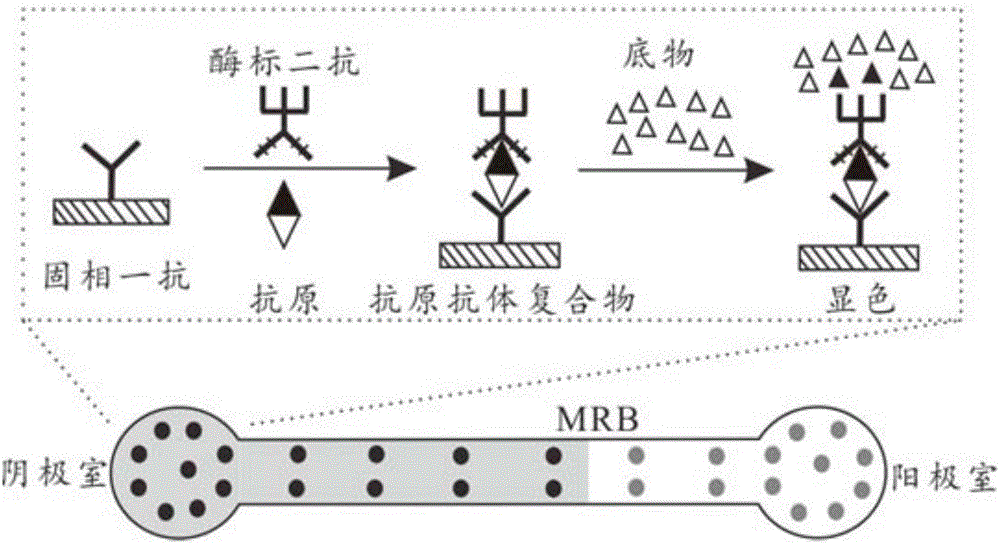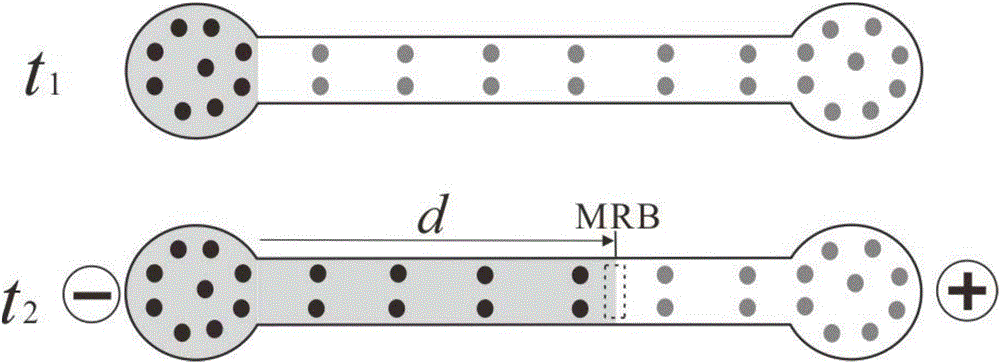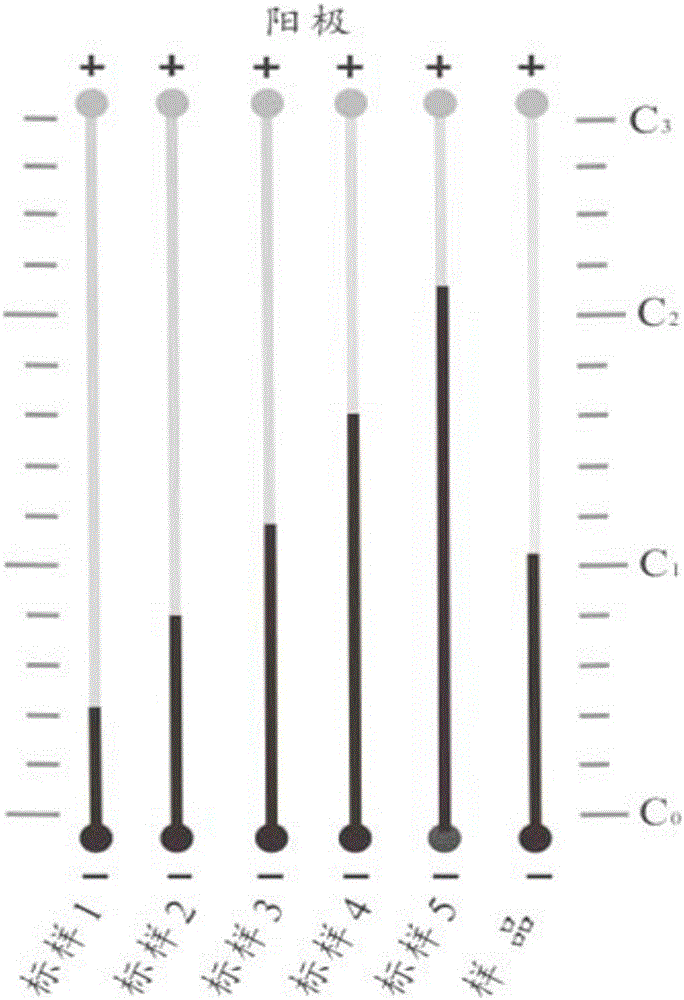Quantitative enzyme-linked immunoabsorbent assay method based on moving reaction boundary electrophoresis titration
A technology of mobile reaction and detection method, which is applied in the direction of chemical reaction of materials and material analysis by observing the influence on chemical indicators, so as to reduce costs and simplify ELISA detection.
- Summary
- Abstract
- Description
- Claims
- Application Information
AI Technical Summary
Problems solved by technology
Method used
Image
Examples
Embodiment 1
[0025] Such as Figure 1~3 As shown, this embodiment performs ELISA-MRB-ET detection on standard samples of SEB type enterotoxins with different concentrations and known SEB-type enterotoxins under the same conditions, and establishes the functional relationship between MRB moving distance and substrate concentration, along the electrophoretic channel Mark the concentration scale; in the sample detection, use the same conditions for ELISA-MRB-ET detection, and the concentration scale corresponding to the stop position of the formed MRB is the substrate concentration in the sample; specifically, the following steps are included:
[0026] Step 1. Fill the gel in the electrophoresis channel and perform primary antibody coating and blocking.
[0027] The electrophoresis channel is a straight electrophoresis channel, and its length, width and height are 20mm, 1.0mm and 0.5mm respectively.
[0028] The two ends of the electrophoresis channel are respectively provided with a cathode...
Embodiment 2
[0053] The standard sample in this embodiment is glycosylated hemoglobin, and the HbA1C in human whole blood is determined by the double-antibody sandwich method.
[0054] The primary antibody of this example is 10 mg / L, 200 μL of haptoglobin, and the cathode chamber is coated overnight at 4° C., and washed 3 times with phosphate buffer.
[0055] Blocking in this embodiment refers to: using 200 μL of 3% BSA to block the blank sites on the plate, incubating at 37° C. for 1 h, washing with phosphate buffer solution 3 times, and removing excess liquid.
[0056] The difference compared with Example 1 is that the serial dilution concentrations of the standard samples in this example are 5 μg / L, 2.5 μg / L, 1.5 μg / L, 0.625 μg / L, 0.3125 μg / L and 0 μg / L respectively .
[0057] The glycosylated hemoglobin can reflect the patient's blood sugar control in the past 8 to 12 weeks, and is a new standard for diabetes diagnosis and a "gold standard" for treatment monitoring.
Embodiment 3
[0059] The standard sample of this embodiment is residual sulfur phosphorus on lettuce.
[0060] Said parathion is a broad-spectrum insecticide, and my country requires that the maximum residue of agricultural products should be less than 0.1 mg / kg, and must not be detected on vegetables and fruits.
[0061] The primary antibody in this example is a goat anti-rabbit antibody, which was diluted by 2000 times, coated the cathode chamber at 200 μL and 4° C. overnight, and washed 3 times with phosphate buffer.
[0062] Compared with Example 1, the difference is that the dilution concentrations of the sulfur and phosphorus standard samples in this example are 500ng / mL, 100ng / mL, 25ng / mL, 12.5ng / mL, 6.5ng / mL and 0ng / mL respectively.
[0063] The experimental conditions of the ELISA in this example are as follows: 10 μL of standard samples, 45 mL of enzyme-labeled substances and 45 mL of antibodies were incubated in the cathode chamber at 37° C. for 30 min, and washed three times wit...
PUM
 Login to View More
Login to View More Abstract
Description
Claims
Application Information
 Login to View More
Login to View More - R&D
- Intellectual Property
- Life Sciences
- Materials
- Tech Scout
- Unparalleled Data Quality
- Higher Quality Content
- 60% Fewer Hallucinations
Browse by: Latest US Patents, China's latest patents, Technical Efficacy Thesaurus, Application Domain, Technology Topic, Popular Technical Reports.
© 2025 PatSnap. All rights reserved.Legal|Privacy policy|Modern Slavery Act Transparency Statement|Sitemap|About US| Contact US: help@patsnap.com



